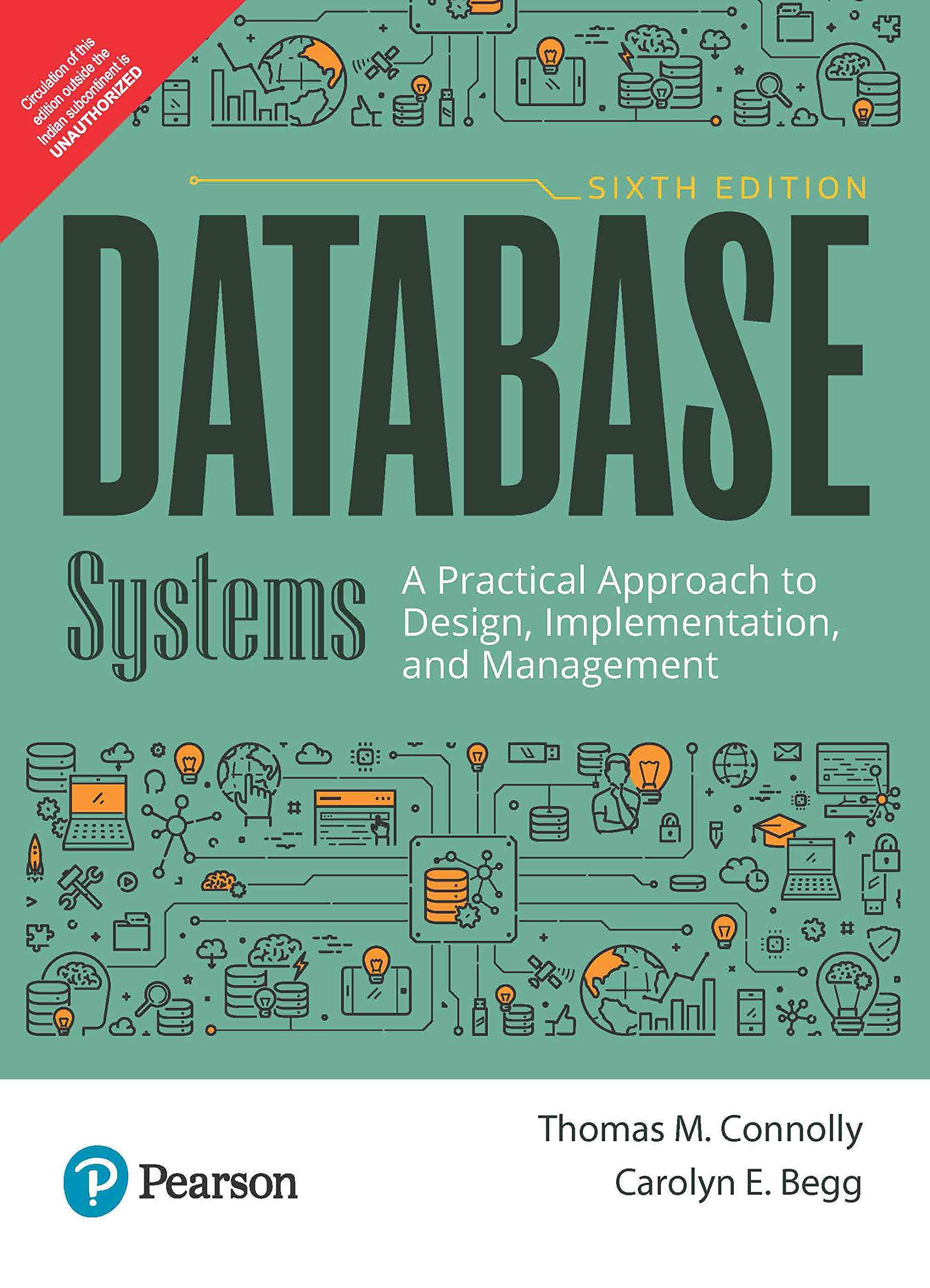Question
Exercises: Answer the following question using IE Crow's Foot notation. Scenario #1: Highline University is a four-year undergraduate school located in the Puget Sound region
Exercises: Answer the following question using IE Crow's Foot notation. Scenario #1: Highline University is a four-year undergraduate school located in the Puget Sound region of Washington State. In this set of case questions, we will consider a different information system for Highline University, one that will be used by the Highline University Mentor Program. The Highline University Mentor Program recruits business professionals as mentors for Highline University students. The mentors are unpaid volunteers who work together with the students advisers to ensure that the students in the mentoring program learn needed and relevant management skills. In this case study, you will develop a data model for the Mentor Program Information System. Highline University, like many colleges and universities in the Pacific Northwest, like all the colleges and universities accredited by the NWCCU, Highline University must be reaccredited at approximately five-year intervals. Additionally, the NWCCU requires annual status-update reports. Highline University is made up of five colleges: 1. The College of Business. 2. The College of Social Sciences and Humanities. 3. The College of Performing Arts. 4. The College of Sciences and Technology. 5. The College of Environmental Sciences. Jan Smathers is the president of Highline University, and Dennis Endersby is the provost (a provost is a vice president of academics; the deans of the colleges report to the provost). Highline University is a fictional university and should not be confused with Highline Community College located in Des Moines, Washington. Any resemblance between Highline University and Highline Community College is unintentional and purely coincidental. A. Draw an E-R data model for the Highline University Mentor Program Information System (MPIS). Use the IE Crows Foot E-R model for your E-R diagrams. Justify the decisions you make regarding minimum and maximum cardinalities. Your model should track students, advisers, and mentors. Additionally, Highline University needs to track alumni because the program administrators view alumni as potential mentors. 1. Create separate entities for students, alumni, faculty advisers, and mentors.
1. At Highline University, all students are required to live on campus and are assigned Highline University ID numbers and email accounts in the format FirstName.LastName@students.hu.edu. The student entity should track student last name, student first name, student University ID number, student email address, dorm name, dorm room number, and dorm phone number. 2. At Highline University, all faculty advisers have on-campus offices and are assigned Highline University ID numbers and email accounts in the format FirstName.LastName@hu.edu. The faculty entity should track faculty last name, faculty first name, faculty University ID number, faculty email address, department, office building name, office building room number, and office phone number. 3. Highline University alumni live off campus and were previously assigned Highline University ID numbers. Alumni have private email accounts in the format FirstName.LastName@somewhere.com. The alumni entity should track alumnus last name, alumnus first name, alumnus former student number, email address, home address, home city, home state, home ZIP code, and phone number. 4. Highline University mentors work for companies and use their company address, phone, and email address for contact information. They do not have Highline University ID numbers as mentors. Email addresses are in the format FirstName.LastName@companyname.com. The mentor entity should track mentor last name, mentor first name, mentor email address, company name, company address, company city, company state, company ZIP code, and company phone number. 5. Create relationships between entities based on the following facts: Each student is assigned one and only one faculty adviser and must have an adviser. One faculty member may advise several students, but faculty members are not required to advise students. Only the fact of this assignment is to be recorded in the data model, not possible related data (such as the date the adviser was assigned to the student). Each student may be assigned one and only one mentor, but students are not required to have a mentor. One mentor may mentor several students, and a person may be listed as a mentor before he or she is actually assigned students to mentor. Only the fact of this assignment is to be recorded in the data model, not possible related data (such as the date the mentor was assigned to the student). Each mentor is assigned to work and coordinate with one and only one faculty member, and each mentor must work with a faculty member. One faculty member may work with several mentors, but faculty members are not required to work with mentors. Only the fact of this assignment is to be recorded in the data model, not possible related data (such as the date the faculty member was assigned to the mentor). Each mentor may be an alumnus, but mentors are not required to be alumni. Alumni cannot, of course, be required to become mentors.
Step by Step Solution
There are 3 Steps involved in it
Step: 1

Get Instant Access to Expert-Tailored Solutions
See step-by-step solutions with expert insights and AI powered tools for academic success
Step: 2

Step: 3

Ace Your Homework with AI
Get the answers you need in no time with our AI-driven, step-by-step assistance
Get Started


